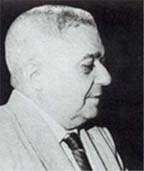A year ago we had the premiere of the documentary “Cristóbal de La Habana“ in the movie room of the San Geronimo University College of Havana, in the historic center of Havana. Emilio Roig de Leuchsenring (August 23, 1889 – August 8, 1964), one of the most outstanding figures of the national intelligentsia of the first half of the twentieth century, stopped being a towering personality right from the history books, at least for me. His role as a communicator in the service of the Cuba heritage was the main topic of the documentary.
According to what some interviewees say, Emilito, as he was called by his closest friends, was serious, authoritative, and of a volcanic temper. Probably the first Historian of the City of Havana (appointed on July 1, 1935) believed that respect was the way to achieve all he had set to do regarding the safeguarding of cultural heritage of the nation. The times were turbulent and awareness for rescuing identity elements inherited from generation to generation was just beginning to be born.
Roig was the pioneer and leading exponent in the defense of Cuban heritage. He used media institutions (mass media, libraries, museums, archives, etc.) to communicate through printed and oral expressions, with a distinct intention not to exclude anyone, all those heritage values that now challenge time from the current Office of the City Historian of Havana (OHCH). It was his action in this regard so deep and strategic that his faithful follower Eusebio Leal Spengler, recognizes him as his main inspiration.
Roig saw museums as media; he promoted and founded libraries with the book collections of the most prestigious intellectuals of his time, gave lectures and used the radio to communicate heritage.
The edition of the Journal of Habanera History, from the volumes of the Chapter Acts of the City of Havana and the founding of the still existing Francisco González del Valle Cuban and American Historical Library are only a few references that illustrate his work in safeguarding documentary memory.
He excelled in Social (1916-1937) and Posters (1924-1954) magazines where he used various pseudonyms to sign his texts as Hermann, The Curious talkative man and Cristóbal de La Habana. Roig’s customs stories understood as ways to rescue the intangible values of the Cuban nation at the time, are true objects of identity that shine through the efforts of an intellectual nationalist ideals in his quest to preserve the traditions and produce a narrative of the Cuban identity.
Through the media he waged countless battles. He prevented the Castillo de la Fuerza from being torn down, a jewel of the Cuban military Renaissance architecture: he opposed the extinction of the old wall panels that are next to the railway terminal of the capital, stopped the tearing down of the Paula’s Church and allowed to retain the cells of the Havana’s Jail, when it was demolished.
Before the documentary, I just knew that Emilio Roig had been a historian, founder of the OHCH in 1938, creator of the National Congresses of History. Discovering some of its lesser-known imprints also allowed me to meet an entire corporate communications strategist, staunch defender of the assets that we can enjoy when we walk through the cobbled streets of Old Havana.









